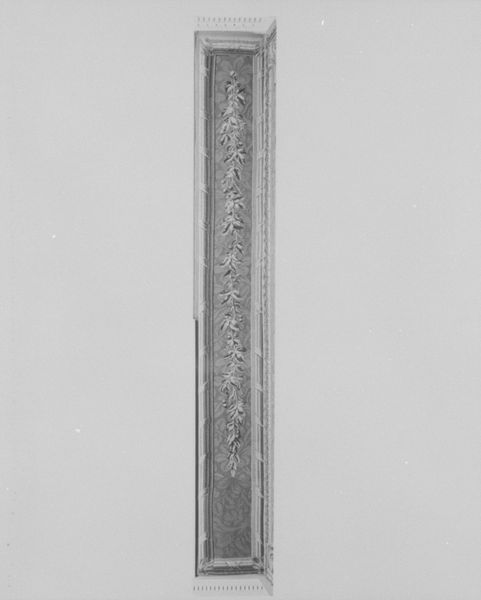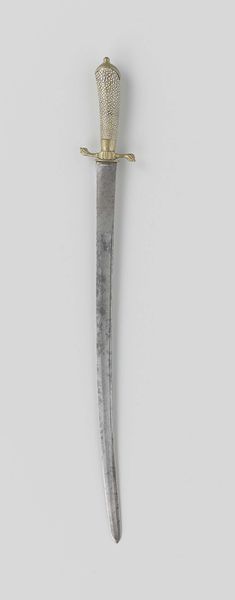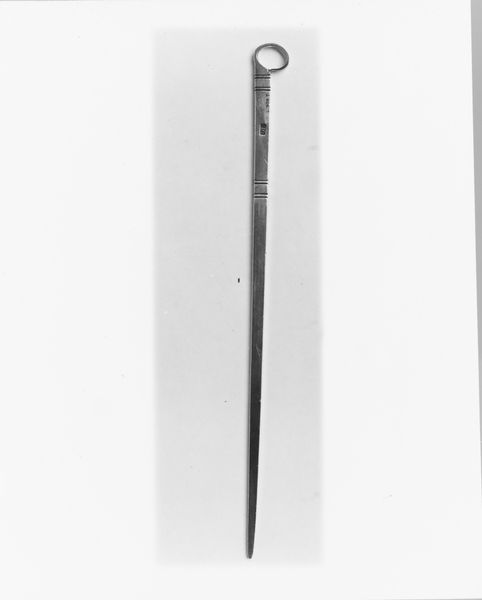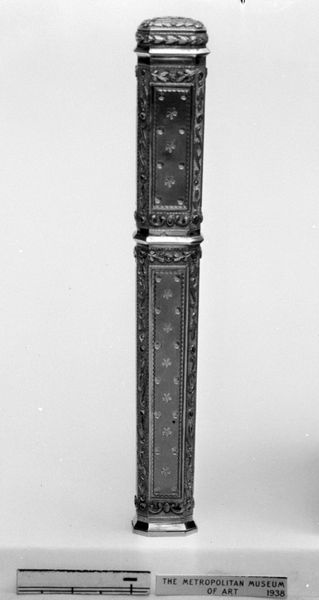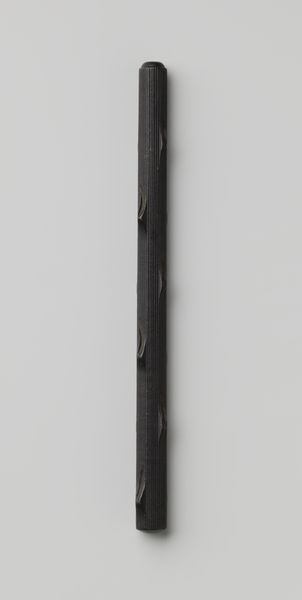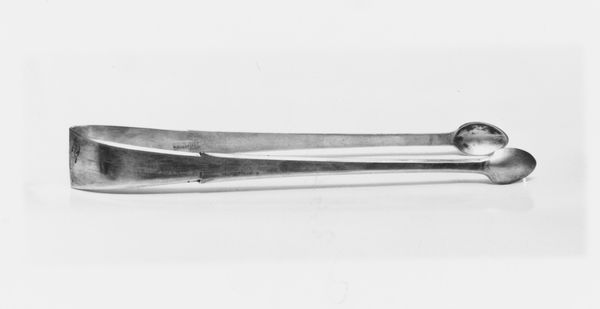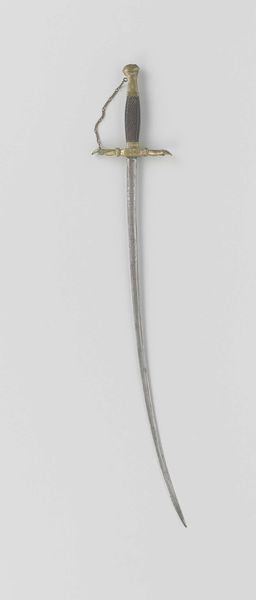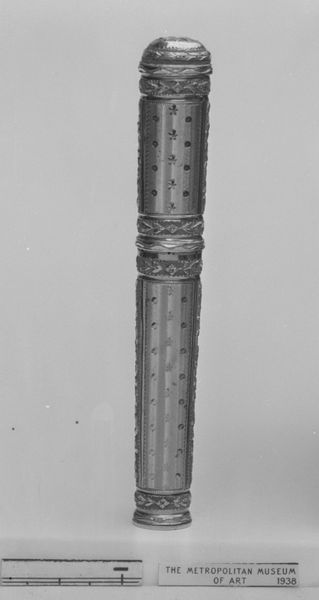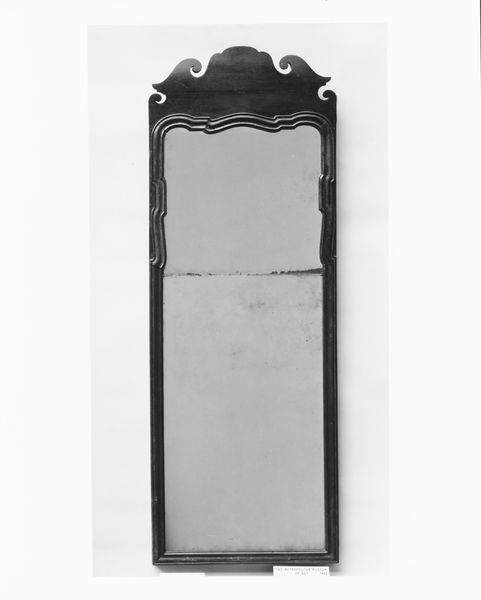
carving, sculpture, wood
#
carving
#
baroque
#
sculpture
#
sculpture
#
wood
#
decorative-art
Dimensions: Overall: 78 1/2 × 17 1/2 × 10 1/4 in. (199.4 × 44.5 × 26 cm)
Copyright: Public Domain
Curator: Let’s take a closer look at this longcase clock. It’s currently housed at the Metropolitan Museum of Art and dates from around 1735 to 1745. It's a fascinating example of Baroque decorative art. Editor: It looks like a portal to another time. All that intricately carved wood, it feels weighty, imposing almost, and strangely, it gives me a slightly uneasy feeling, perhaps just due to the latent awareness of all the passing of time. Curator: That's an interesting reaction. The Baroque period often used visual density to symbolize status and wealth, perhaps contributing to that feeling of imposition. I see the heaviness you mention in its material. The prominent use of carved wood is an allusion to luxury but also hints at the more profound concept of temporal authority, marking the owner as someone who commands time. Editor: Temporal authority, that's clever. It makes you think about the concept of time passing. Did people perceive time differently back then? It seems more ornate, maybe more precious? This isn’t your sleek, minimalist digital clock. Curator: Absolutely. Time was intimately tied to craft. This wasn't just a functional object; it was a statement about skill, artistry, and legacy. Symbols abound here: The case design blends religious architectural forms to make it look stately. These clockmakers created status symbols layered in cultural meanings. Editor: You’re right. Looking at those claw feet gives me a primal sense of stability, permanence almost, at the same time as it evokes animals, change, transformation. It is as if time's solidity and its fluid passage were condensed into that single, beautifully made base. Curator: Exactly. Even the sounds the clock makes – the chimes, the ticks, would have become embedded within daily rituals, influencing the rhythms of daily existence. Editor: And now, it's just… silent. Preserved, observed, a captured moment that continues measuring time. It really makes one pause to contemplate one’s own brief moment. It feels both beautiful and unnerving to consider, honestly. Curator: That's the strange magic of time, I think. Art objects hold those reverberations so acutely; past, present, and possible futures are visible there for us to appreciate.
Comments
No comments
Be the first to comment and join the conversation on the ultimate creative platform.
